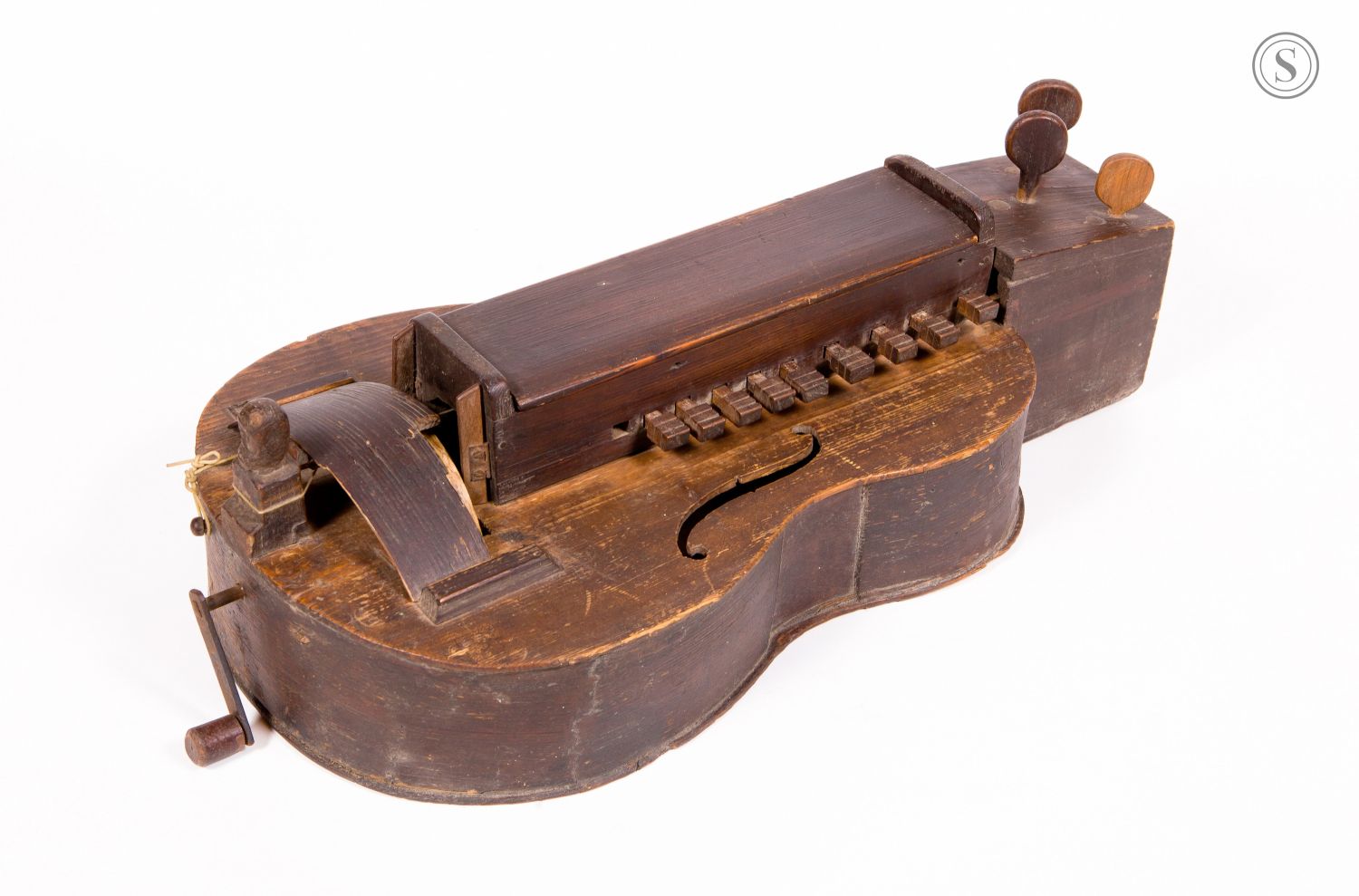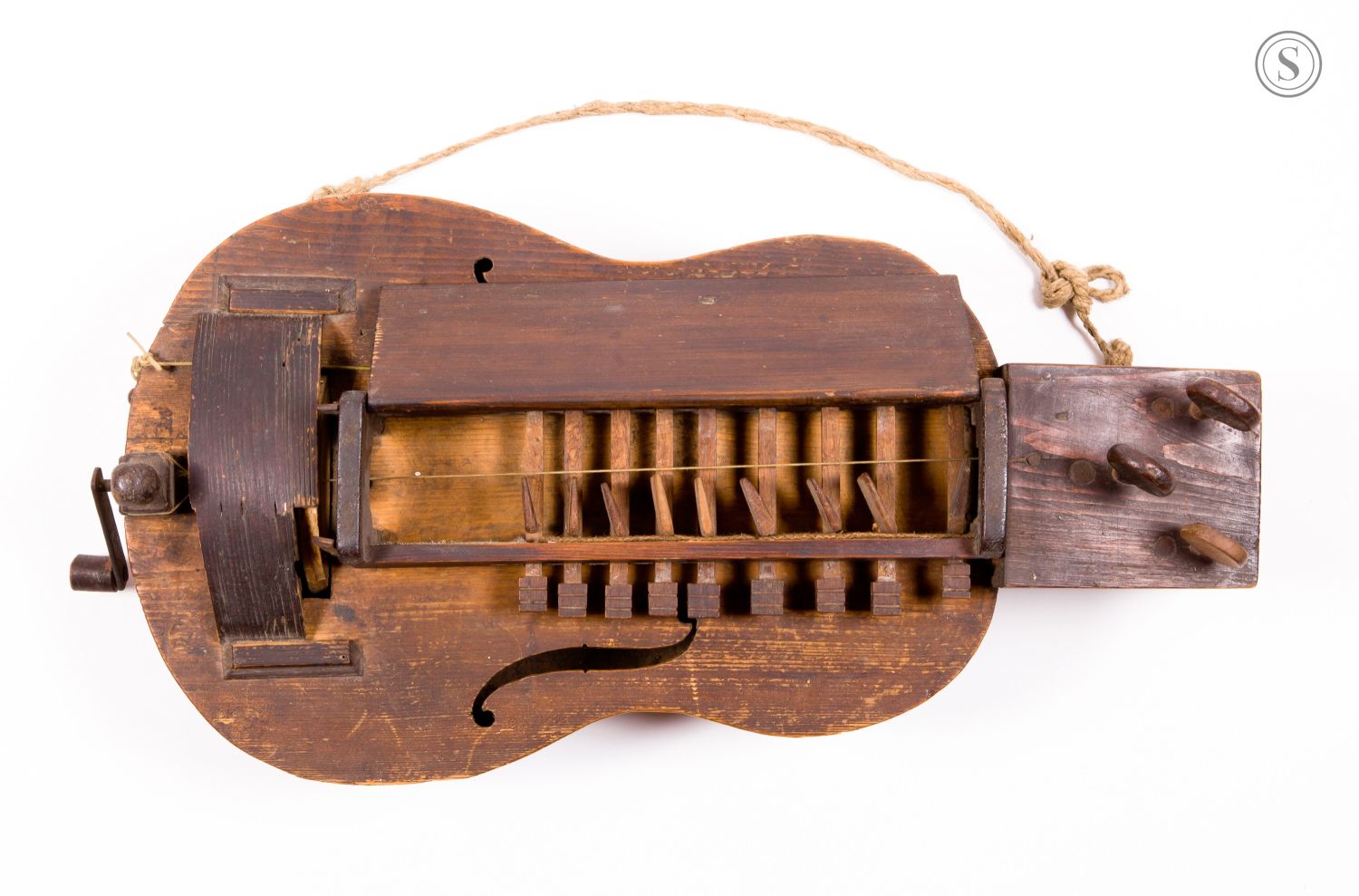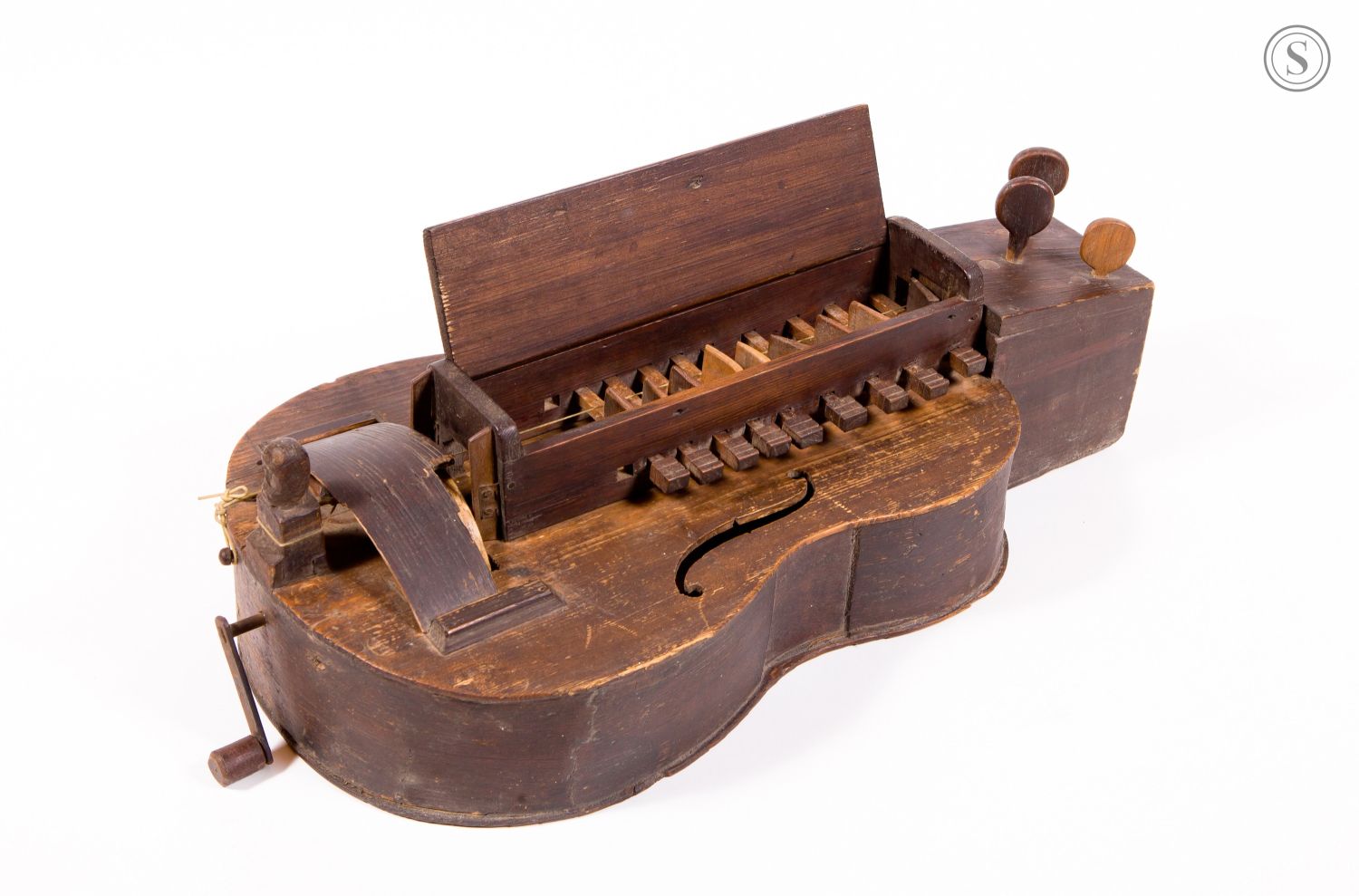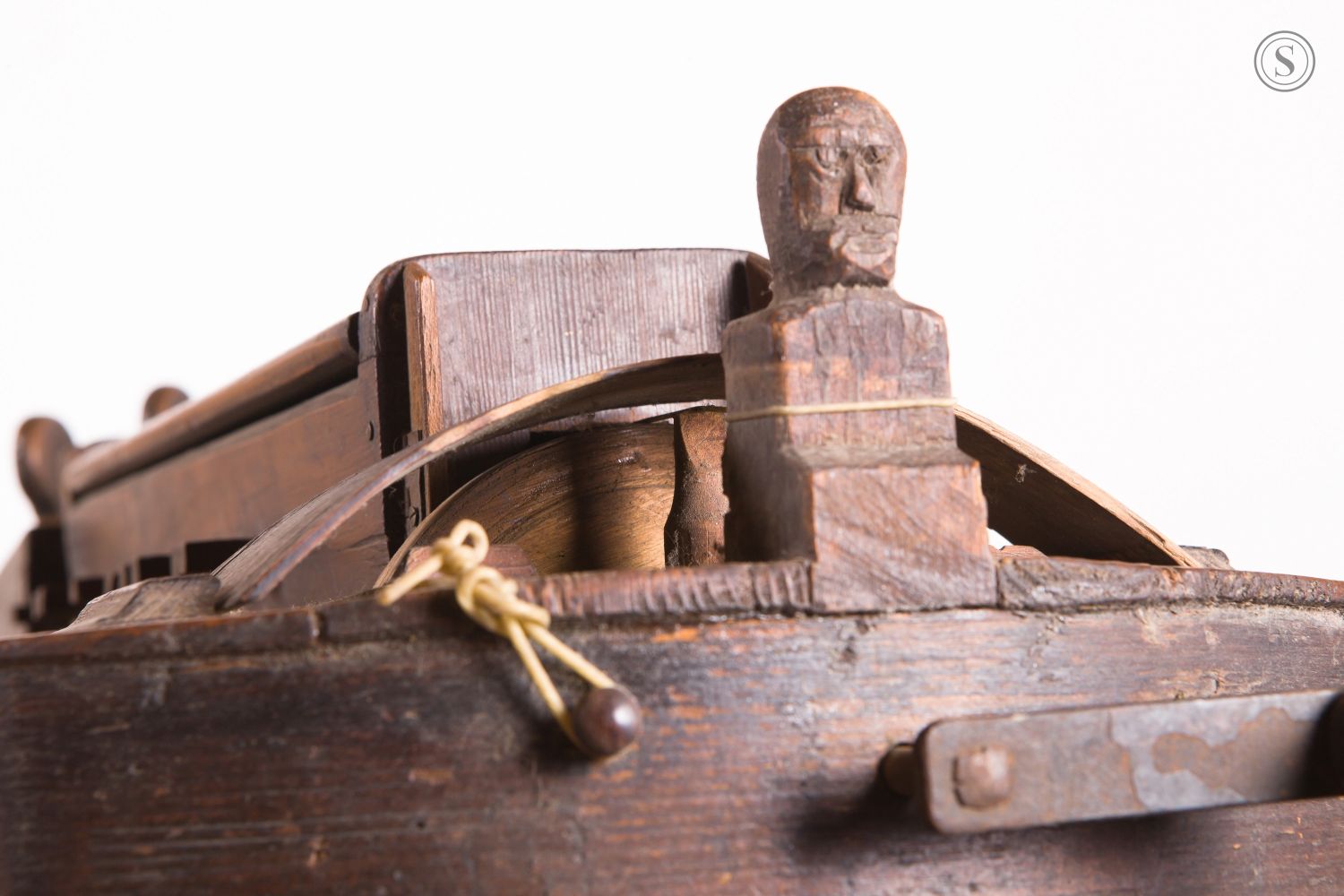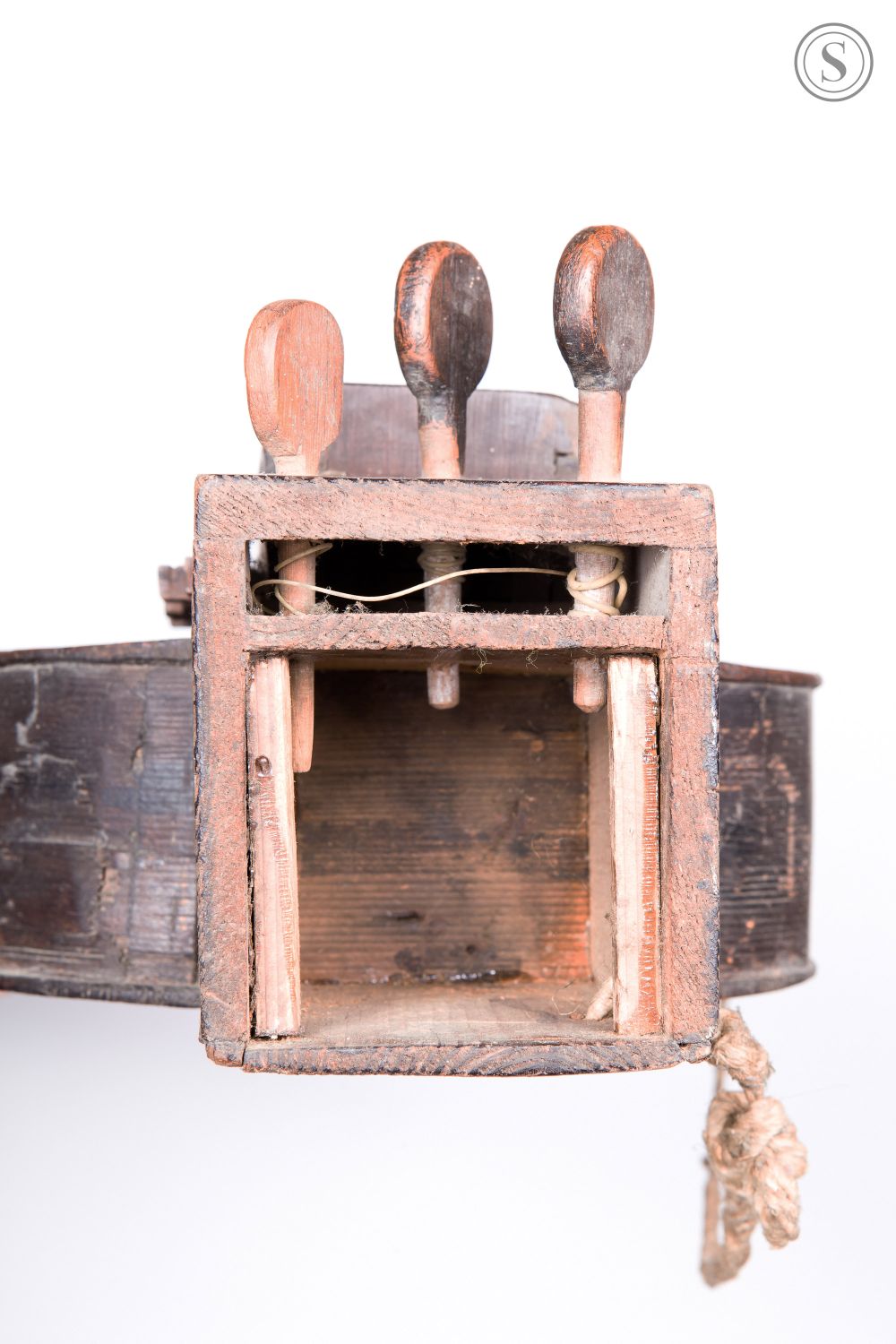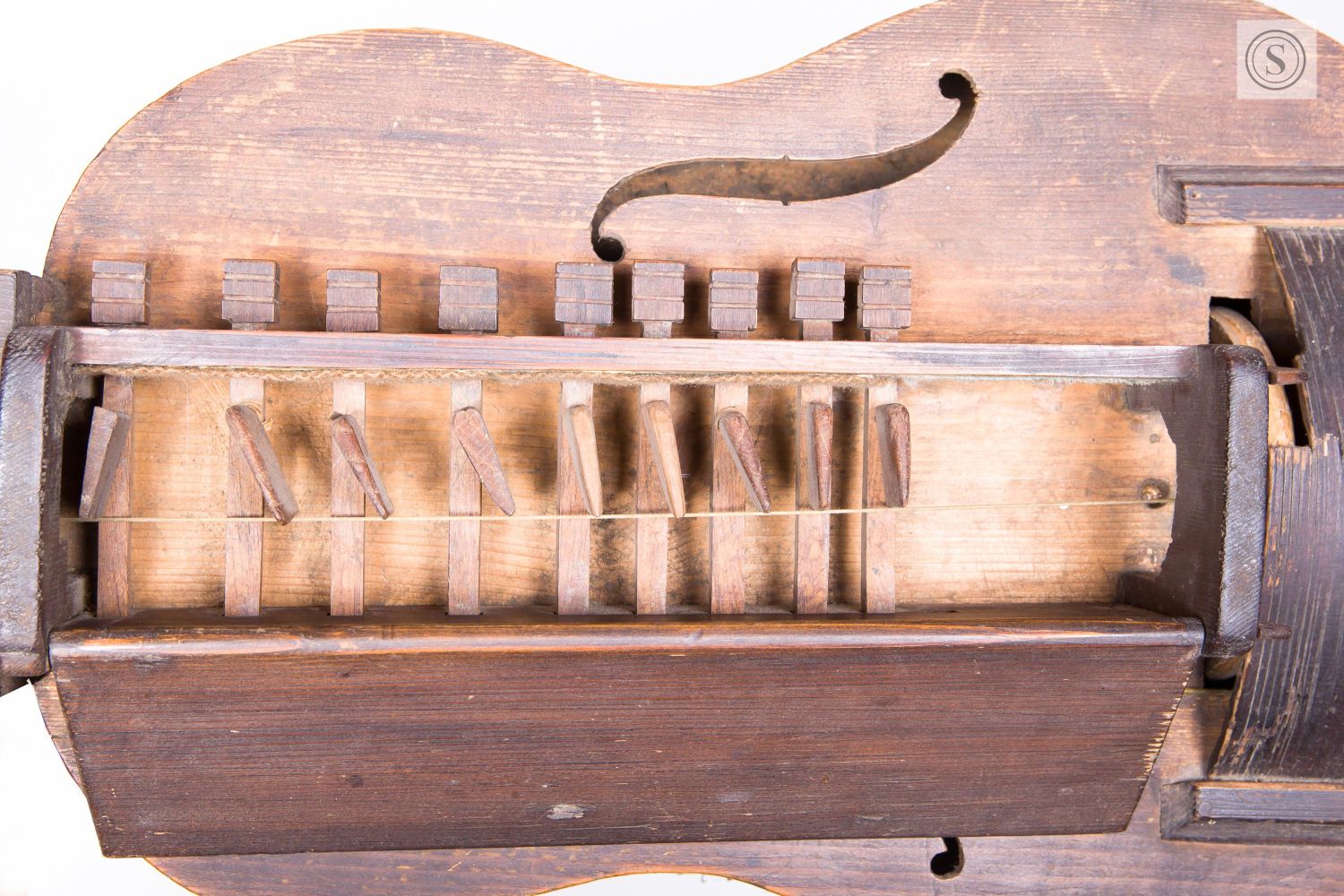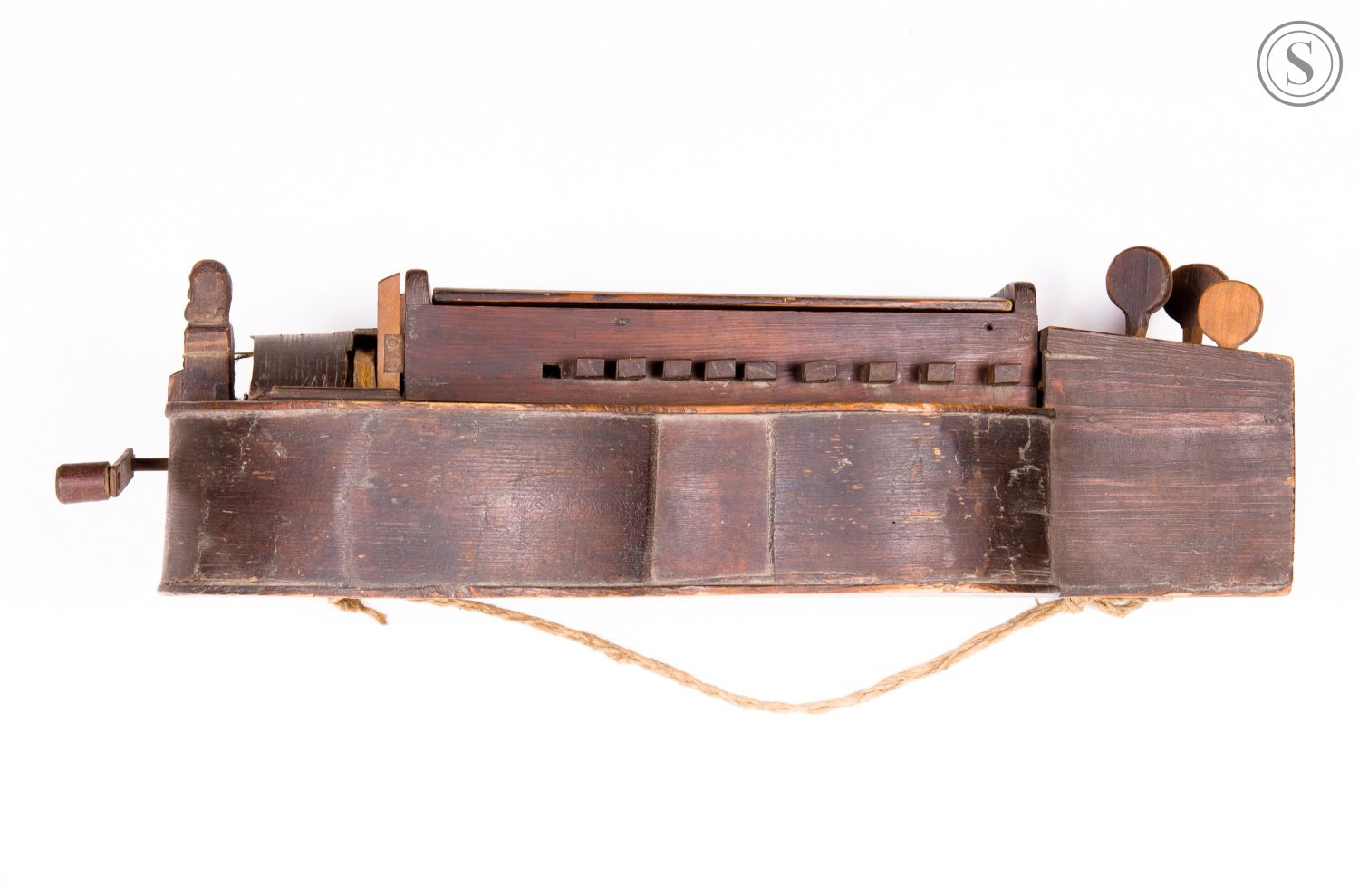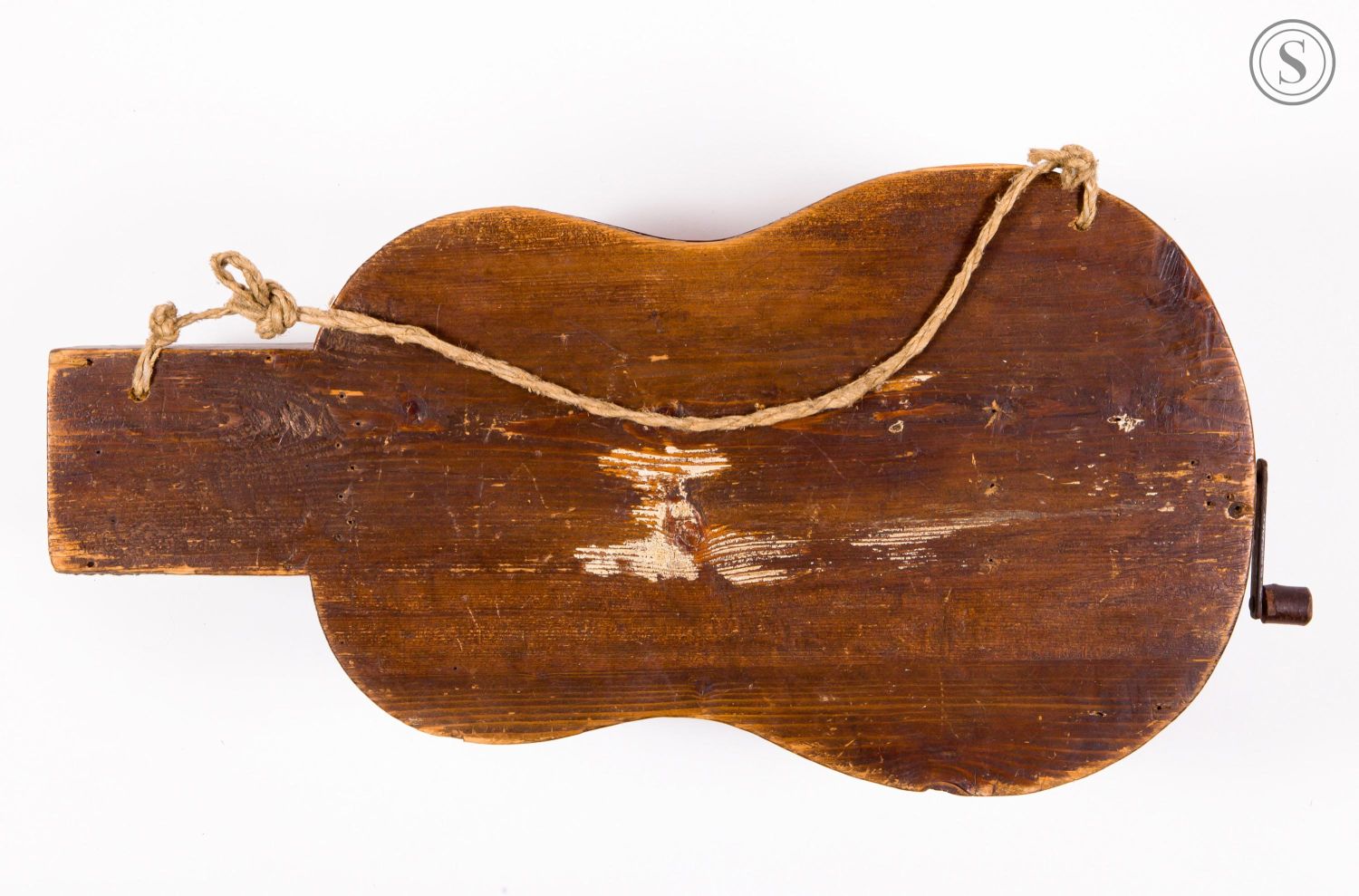hurdy-gurdy
hurdy-gurdy
Local name: lira (lyre), lira kręcona (turned lyre), lira dziadowska, lira żebracza (beggar’s lyre), lira wiejska, (country lyre)Classification: 3 Chordophones / 32 Composite chordophones / 321 Lutes / 321.3 Handle lutes / 321.32 Necked lutes / 321.322 Necked box lutes or necked guitars / 321.322-72 Necked box lutes or necked guitars sounded by bowing by a wheel
Maker: Unknown
Date: before 1939
Village / Town: Rzeczniówka (near Kremeneć)
Region: Carpathian area (Tarnopol region)
Country: Ukraine
Owner: Museum of Folk Musical Instruments in Szydłowiec
Inventory number: MLIM/MS/1558
Description: guitar-shaped body made of flat plates and bent ribs; keybox and pegbox attached to it; three strings: one melody string (inside the keybox, shortened by ten tangents) and two bourdon strings (outside the keybox); strings agitated by a wheel bow turned by a crank (mechanic bow)
Decoration: antropomorphic hook for the melody string (head, stump)
Measurements: 585 x 232-308 x 165 mm
Materials: wood, metal, catgut
Sound compass, tuning: diatonic eleventh; tangents may be shifted to some degree, which produces different scales
Performance practice: used in the territories of the First Polish Republic by wandering singers, or "dziady", mainly in the east, especially in White Russia and Ukraine, where it survived until the interwar period, later played sporadically; in ethnically Polish regions (the areas of Rzeszów and Sandomierz) it disappeared completely before World War I; nowadays reactivated in the folk revival
Catalog card by: Zbigniew J. Przerembski
Design (PDF)
hurdy-gurdy; rec. Museum of Sound
<< Back

